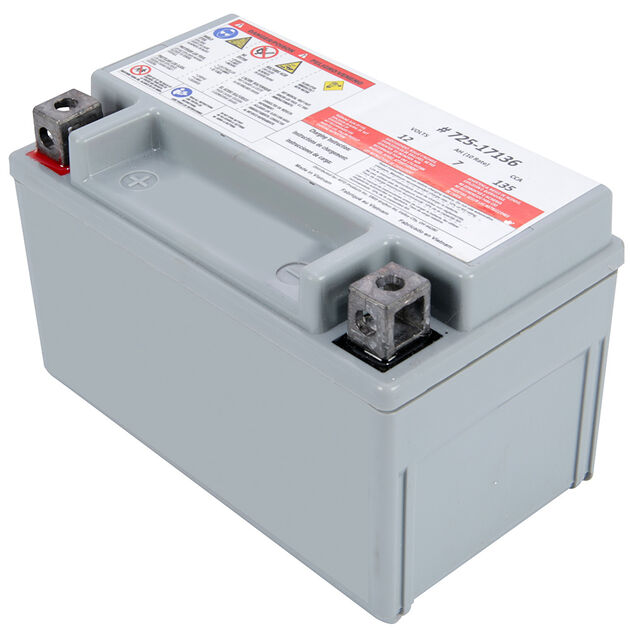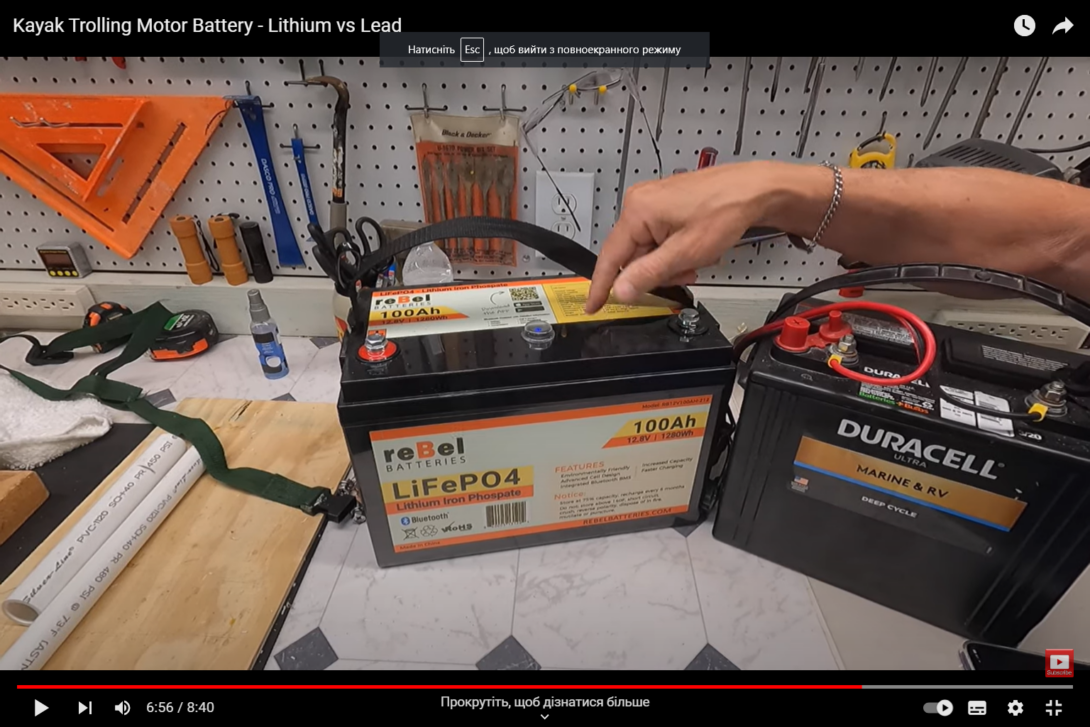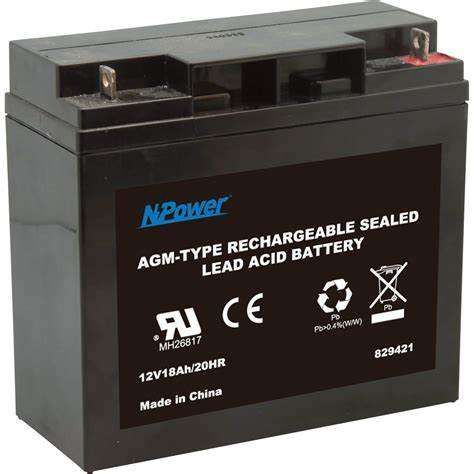Whether you’re a seasoned angler or a nature enthusiast, kayaking offers an unmatched experience of tranquility and adventure. To amplify your kayaking escapades, investing in the right trolling motor battery is essential. In this comprehensive guide, we’ll delve into the world of trolling motor batteries for kayaks, exploring their types, benefits, maintenance, and top picks.
Types of Trolling Motor Batteries
When selecting a trolling motor battery for your kayak, understanding the different types available is crucial. There are primarily three types to consider:
Lead-Acid Batteries
Lead-acid batteries are the traditional choice for many kayak enthusiasts. They are affordable and provide reliable power. However, they are heavier and require proper ventilation due to the emission of gases during charging.
AGM Batteries (Absorbent Glass Mat)

AGM batteries have gained popularity due to their maintenance-free nature and spill-proof design. They offer exceptional performance, faster charging, and longer lifespan compared to lead-acid batteries. These batteries are perfect for kayakers seeking convenience and reliability.
Lithium Batteries

Alt:Kayak engine battery
Lithium batteries are the cutting-edge solution, known for their lightweight construction and high energy density. They provide longer-lasting power, faster charging times, and are less affected by temperature variations. While more expensive, they offer remarkable performance and longevity.
Benefits of Using Trolling Motor Batteries
Trolling motor batteries bring a multitude of benefits to your kayaking experience. Here’s why they’re a game-changer:
- Extended Adventures: A reliable trolling motor battery ensures you can explore farther and longer without worrying about manual propulsion;
- Effortless Navigation: The motor provides effortless navigation, enabling you to focus on fishing or soaking in the surroundings;
- Versatility: Whether you’re kayaking in calm waters or tackling currents, a trolling motor battery adapts to different conditions;
- Precise Maneuvering: Trolling motors allow precise maneuvering, making it easier to navigate tight spots or follow the best fishing spots.
Maintaining Your Trolling Motor Battery
Proper maintenance is key to maximizing the lifespan and performance of your trolling motor battery:
- Regular Charging: Charge your battery after each use, and avoid overcharging to prevent damage;
- Storage: Store your battery in a cool and dry place, away from direct sunlight;
- Cleaning: Keep the battery terminals clean and corrosion-free using a mixture of baking soda and water;
- Winter Care: If kayaking in colder months, remove the battery and store it indoors to prevent freezing.
Top Trolling Motor Battery Picks
To help you make an informed decision, here are our top recommendations:
| Battery Model | Type | Capacity | Weight | Price |
|---|---|---|---|---|
| PowerMax Pro | AGM | 100Ah | 65 lbs | $250 |
| VoltX Marine | Lithium | 75Ah | 30 lbs | $600 |
| AquaCell Extreme | Lead-Acid | 110Ah | 80 lbs | $150 |
Comparing Trolling Motor Battery Types
Let’s compare the three battery types to help you choose the right one for your kayaking needs:
| Aspect | Lead-Acid | AGM | Lithium |
|---|---|---|---|
| Weight | Heavier | Moderate | Lightweight |
| Lifespan | Moderate | Long | Longest |
| Charging Time | Longer | Shorter | Shortest |
| Maintenance | Moderate | Low | Minimal |
Installing Your Trolling Motor Battery
Installing your trolling motor battery correctly ensures optimal performance:
- Select a Suitable Location: Place the battery where it’s secure and won’t hinder your movement;
- Secure the Battery: Use straps or mounts to secure the battery in place;
- Connect the Cables: Attach the positive and negative cables to the corresponding terminals;
- Test the Setup: Turn on the motor and ensure smooth operation before hitting the water.
Selecting the Right Capacity
Choosing the appropriate battery capacity is crucial to ensure your kayaking adventures are uninterrupted. Consider the following factors:
- Distance: Determine how far you plan to travel on a single trip, and choose a battery with enough capacity to cover that distance;
- Usage Time: Estimate the duration of your kayaking sessions. A higher capacity battery is essential for longer journeys;
- Accessories: If you’re using additional accessories like fish finders or GPS, factor in their power consumption when selecting battery capacity.
Essential Features to Look For
When evaluating different trolling motor batteries, keep an eye out for these essential features:
- Battery Indicator: A built-in battery indicator helps you monitor the remaining power and plan your trips accordingly;
- Durability: Opt for batteries designed to withstand water splashes and rough conditions to ensure longevity;
- Dual-Purpose Design: Some batteries can serve as both a trolling motor battery and a starting battery for your kayak’s engine.
Charging Options
Understanding the charging options available for your trolling motor battery is essential for convenience:
- Onboard Charging: Some kayaks come with onboard charging systems that allow you to charge the battery directly from an outlet;
- Portable Chargers: Portable battery chargers are handy for recharging your battery at home or on the go;
- Solar Chargers: Solar panels provide a sustainable way to charge your battery during outdoor trips.
Proper Disposal and Recycling
When your trolling motor battery reaches the end of its lifespan, it’s crucial to dispose of it properly:
- Recycling Centers: Many areas have designated recycling centers that accept old batteries for safe disposal;
- Retailer Programs: Some retailers offer battery recycling programs where you can return your old battery when purchasing a new one.
Maximizing Battery Life
Extend the life of your trolling motor battery with these tips:
- Avoid Over-Discharge: Don’t run the battery to empty; recharge it before it’s completely drained;
- Equalize Charging: For lead-acid batteries, occasional equalizing charges help maintain cell balance;
- Temperature Considerations: Store your battery in a temperature-controlled environment to prevent extreme temperature fluctuations.
Comparing Battery Prices
Battery prices can vary significantly based on type, capacity, and brand. Here’s a quick price comparison:
| Battery Type | Average Price Range |
|---|---|
| Lead-Acid | $100 – $300 |
| AGM | $200 – $500 |
| Lithium | $400 – $1000+ |
DIY Battery Maintenance
Performing basic maintenance tasks can extend the life of your trolling motor battery:
- Terminal Cleaning: Regularly clean battery terminals to prevent corrosion and ensure a secure connection;
- Water Levels: For lead-acid batteries, check water levels periodically and top up with distilled water if needed.
Eco-Friendly Battery Options
If you’re environmentally conscious, consider these eco-friendly battery options:
- Recycled Batteries: Some manufacturers offer batteries made from recycled materials, reducing the environmental impact;
- Lithium Iron Phosphate (LiFePO4): LiFePO4 batteries are more environmentally friendly due to their longer lifespan and fewer toxic materials.
Sizing Up Compatibility
Before purchasing a trolling motor battery, ensure it’s compatible with your kayak and motor setup:
- Weight Capacity: Make sure the battery’s weight is suitable for your kayak’s load capacity;
- Voltage Match: Check that the battery voltage matches the requirements of your trolling motor.
Optimizing Battery Placement
Where you place your battery on the kayak can affect stability and performance:
- Balanced Distribution: Position the battery centrally to maintain the kayak’s balance and stability;
- Secure Mounting: Use proper mounts and straps to secure the battery and prevent movement during kayaking.
Choosing the Right Voltage
The voltage of your trolling motor battery is a critical consideration. Common voltages include 12V, 24V, and 36V. Choose a voltage that matches your kayak’s motor and allows for efficient power delivery.
Maintenance Tips for Different Battery Types
Each battery type requires specific maintenance. Follow these guidelines to keep your battery in optimal condition:
- Lead-Acid: Check water levels regularly, use distilled water for top-ups, and clean terminals to prevent sulfation;
- AGM: Keep the battery clean and avoid overcharging to maintain its sealed design;
- Lithium: Store lithium batteries at partial charge during off-season, and avoid deep discharge for longevity.
Factors Affecting Battery Performance
Several factors can impact your trolling motor battery’s performance:
- Water Temperature: Cold water reduces battery efficiency, so plan accordingly in colder climates;
- Wind Resistance: Windy conditions can drain the battery faster due to increased resistance;
- Load Size: Heavier loads, such as carrying extra gear, can reduce battery life.
Efficient Use of Trolling Motor Battery
To get the most out of your trolling motor battery, adopt these efficient usage practices:
- Use Lower Speeds: Operating at lower speeds conserves energy and extends battery life;
- Navigate Wisely: Plan your route to minimize unnecessary detours and save battery power;
- Switch to Manual: When conditions permit, switch to manual paddling to conserve battery for later use.
Testing and Replacing Your Battery
Regular testing ensures your battery is in top condition. Perform these tests:
- Voltage Test: Use a multimeter to check the battery’s voltage when fully charged and during use;
- Load Test: Apply a load to the battery to determine how well it maintains voltage under strain;
- Replacing Batteries: Replace your battery when its capacity drops significantly or it fails load tests.
Customizing Battery Solutions
In some cases, off-the-shelf batteries may not meet your specific needs. Consider customized solutions:
- Battery Banks: Connect multiple batteries in parallel or series for increased capacity or voltage;
- Power Management Systems: Install systems that automatically switch between batteries to optimize power distribution.
Safety Precautions
Prioritize safety when dealing with trolling motor batteries:
- Ventilation: Ensure proper ventilation during charging to prevent buildup of explosive gases;
- Proper Storage: Store batteries in well-ventilated areas away from flammable materials;
- Protective Gear: Wear gloves and eye protection when handling batteries and cleaning terminals.
Warranty Considerations
When purchasing a trolling motor battery, review the manufacturer’s warranty:
- Warranty Length: Check the duration of the warranty to ensure adequate coverage;
- Coverage Details: Understand what the warranty covers, including defects and performance issues;
- Maintenance Requirements: Some warranties may require regular maintenance to remain valid.
Innovations in Battery Technology
Battery technology continues to evolve, leading to exciting innovations:
- Fast Charging: Some lithium batteries offer rapid charging capabilities, reducing downtime;
- Smart Batteries: Smart batteries with integrated Bluetooth or Wi-Fi allow you to monitor battery status through your phone;
- Hybrid Solutions: Hybrid batteries that combine lithium and lead-acid technologies offer a balance of performance and affordability.
Conclusion
Trolling motor batteries elevate your kayaking adventures by adding power and convenience. Whether you opt for lead-acid, AGM, or lithium, each type has its unique advantages. Choose the one that aligns with your needs, and enjoy the thrill of effortless navigation on the water.
Frequently Asked Questions
While it’s possible, car batteries are not designed for marine use and may not withstand the conditions.
Ideally, charge it after each use to ensure it’s ready for your next adventure.
Yes, lithium batteries offer longer lifespan, faster charging, and lightweight advantages that can enhance your experience.
Yes, solar panels can be a sustainable way to keep your battery charged during extended trips.
AGM batteries typically last around 3-5 years with proper care and maintenance.



